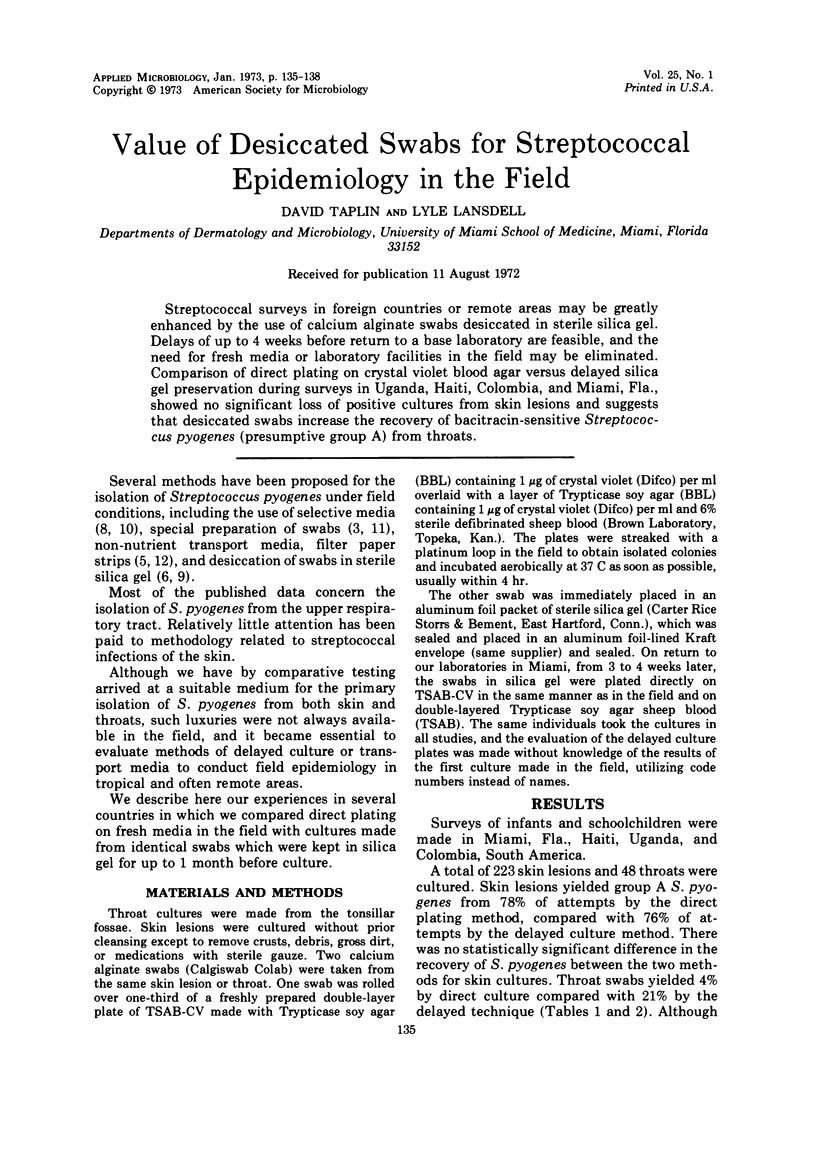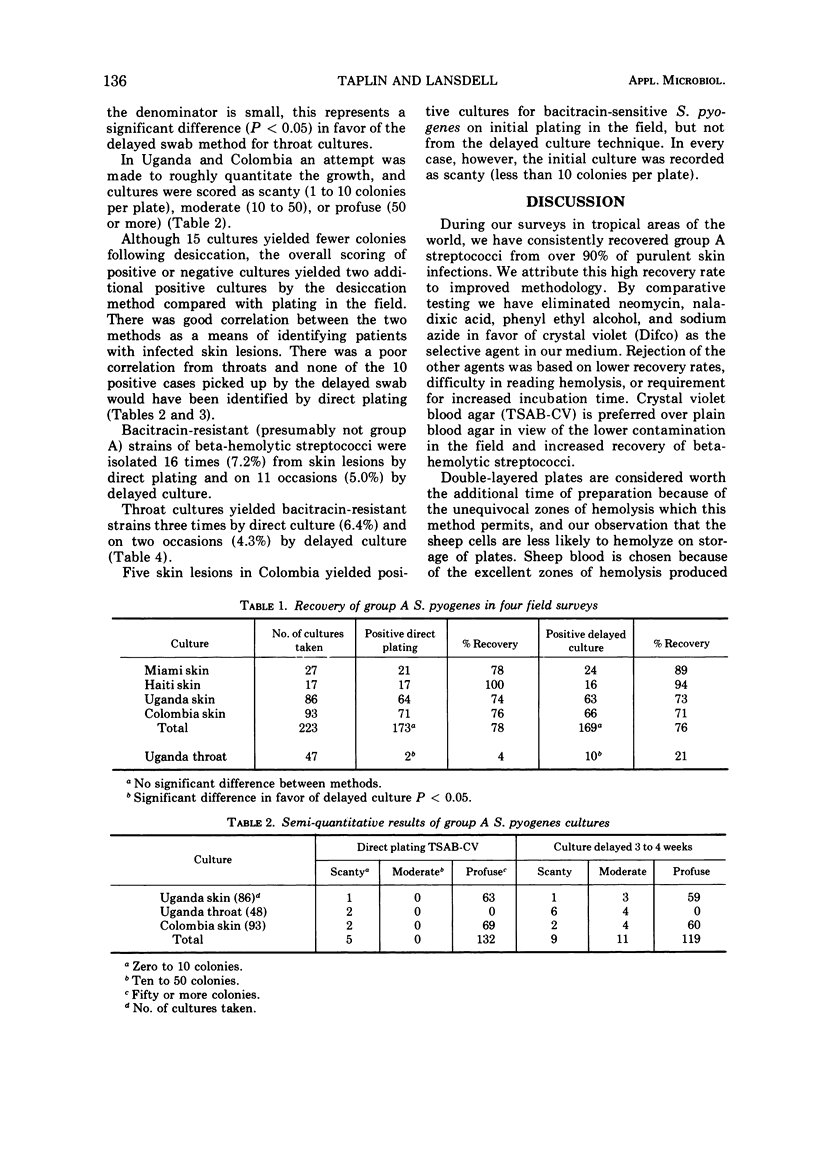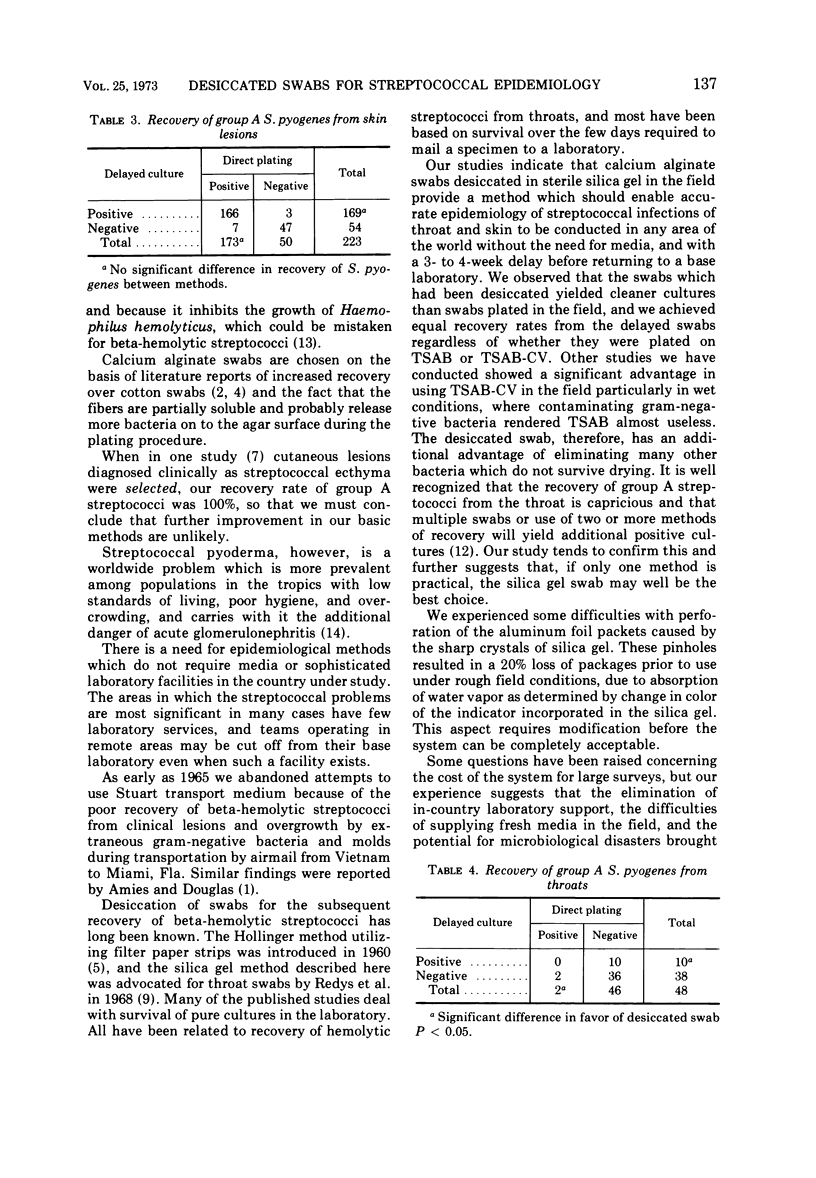Abstract
Streptococcal surveys in foreign countries or remote areas may be greatly enhanced by the use of calcium alginate swabs desiccated in sterile silica gel. Delays of up to 4 weeks before return to a base laboratory are feasible, and the need for fresh media or laboratory facilities in the field may be eliminated. Comparison of direct plating on crystal violet blood agar versus delayed silica gel preservation during surveys in Uganda, Haiti, Colombia, and Miami, Fla., showed no significant loss of positive cultures from skin lesions and suggests that desiccated swabs increase the recovery of bacitracin-sensitive Streptococcus pyogenes (presumptive group A) from throats.
Full text
PDF



Selected References
These references are in PubMed. This may not be the complete list of references from this article.
- CAIN R. M., STEELE H. The use of calcium alginate soluble wool for the examination of cleansed eating utensils. Can J Public Health. 1953 Dec;44(12):464–467. [PubMed] [Google Scholar]
- COOPER G. N. The prolonged survival of upper respiratory tract and intestinal pathogens on swabs. J Clin Pathol. 1957 Aug;10(3):226–230. doi: 10.1136/jcp.10.3.226. [DOI] [PMC free article] [PubMed] [Google Scholar]
- HOLLINGER N. F., LINDBERG L. H., RUSSELL E. L., SIZER H. B., COLE R. M., BROWNE A. S., UPDYKE E. L. Transport of streptococci on filter paper strips. Public Health Rep. 1960 Mar;75:251–259. [PMC free article] [PubMed] [Google Scholar]
- Kelly C., Taplin D., Allen A. M. Streptococcal ecthyma. Treatment with benzathine pencillin G. Arch Dermatol. 1971 Mar;103(3):306–310. doi: 10.1001/archderm.103.3.306. [DOI] [PubMed] [Google Scholar]
- LOWBURY E. J., KIDSON A., LILLY H. A. A NEW SELECTIVE BLOOD AGAR MEDIUM FOR STREPTOCOCCUS PYOGENES AND OTHER HAEMOLYTIC STREPTOCOCCI. J Clin Pathol. 1964 May;17:231–235. doi: 10.1136/jcp.17.3.231. [DOI] [PMC free article] [PubMed] [Google Scholar]
- RUBBO S. D., BENJAMIN M. Some observations on survival of pathogenic bacteria on cotton-wool swabs; development of a new type of swab. Br Med J. 1951 May 5;1(4713):983–987. doi: 10.1136/bmj.1.4713.983. [DOI] [PMC free article] [PubMed] [Google Scholar]
- Redys J. J., Hibbard E. W., Borman E. K. Improved dry-swab transportation for streptococcal specimens. Public Health Rep. 1968 Feb;83(2):143–149. [PMC free article] [PubMed] [Google Scholar]
- Smith R. E., Pease N. M., Reiquam C. W., Beatty E. C., Jr A comparison of multiple technics in the recovery of group A streptococci from throat cultures of children. A study of 13,476 cases. Am J Clin Pathol. 1965 Dec;44(6):689–694. doi: 10.1093/ajcp/44.6.689. [DOI] [PubMed] [Google Scholar]
- Wannamaker L. W. Differences between streptococcal infections of the throat and of the skin (second of two parts). N Engl J Med. 1970 Jan 8;282(2):78–85. doi: 10.1056/NEJM197001082820206. [DOI] [PubMed] [Google Scholar]


